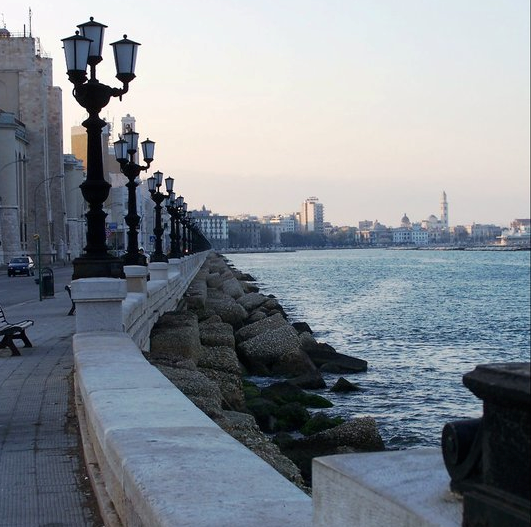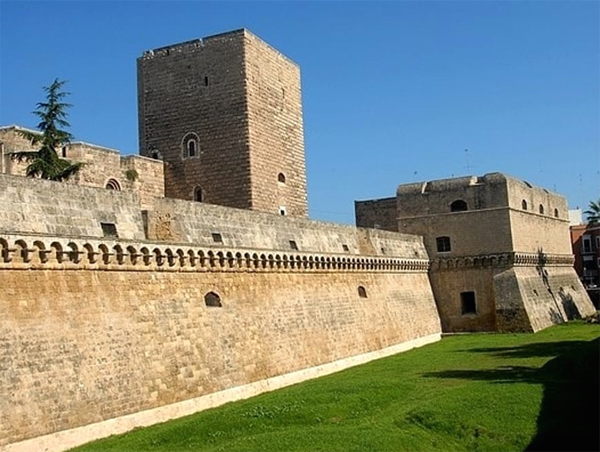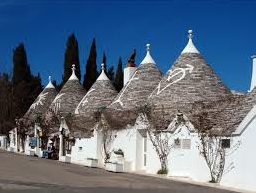Bari, Italy – October 6-9, 2019.

2019 IEEE International Conference on Systems, Man, and Cybernetics (SMC2019) will be held in the south of Europe in Bari, one of the most beautiful and historical cities in Italy. The Bari region’s nickname is “Little California” for its nice weather and Bari’s cuisine is one of Italian most traditional, based of local seafood and olive oil.
SMC2019 is the flagship conference of the IEEE Systems, Man, and Cybernetics Society. It provides an international forum for researchers and practitioners to report up-to-the-minute innovations and developments summarize state-of-the-art, and exchange ideas and advances in all aspects of systems science and engineering, human machine systems and cybernetics. Advances have importance in the creation of intelligent environments involving technologies interacting with humans to provide an enriching experience, and thereby improve quality of life.
Bari is the capital city of the province of Bari and of the Apulia region, on the Adriatic Sea, in Italy. It is the second most important economic centre of mainland Southern Italy after Naples, and is well known as a port and university city, as well as the city of Saint Nicholas.
The city itself has a population of about 320,475, over 116 square kilometres (45 sq mi), while the fast-growing urban area counts 653,028 inhabitants over 203 square kilometres (78 sq mi). The metropolitan area counts 1 million inhabitants.

Bari is made up of four different urban sections. To the north is the closely built old town on the peninsula between two modern harbours, with the Basilica of Saint Nicholas, the Cathedral of San Sabino (1035–1171) and the Hohenstaufen Castle built for Frederick II, which is now also a major nightlife district. To the south is the Murat quarter (erected by Joachim Murat), the modern heart of the city, which is laid out on a rectangular grid-plan with a promenade on the sea and the major shopping district (the via Sparano and via Argiro).
Bari is home to two universities: the University of Bari that focuses on the arts, sciences, mathematics, social sciences, literature, medicine, law, and education; while the Polytechnic of Bari that is a state technological university, shapes architects, engineers and industrial designers.
Modern residential zones surround the centre of Bari, the result of chaotic development during the 1960s and 1970s replacing the old suburbs that had developed along roads splaying outwards from gates in the city walls. In addition, the outer suburbs have developed rapidly during the 1990s.
The pace of life is dominated by the rhythms of work, especially of commerce, its main source of wealth. Due to its “vocation” for commerce, in Bari there are many shops and stores of every kind.
Bari’s cuisine, one of Italy’s most traditional and noteworthy, is based on three typical agricultural products found within the surrounding Puglia region, namely wheat, olive oil and wine.
Bari, being the capital of an important fishing area, offers a range of fresh fish and seafood, often eaten raw. Octopus, sea urchins and mussels feature heavily. Indeed, perhaps Bari’s most famous dish is the oven-baked Patate, riso e cozze (potatoes with rice and mussels). Bari and its province, not to mention the Puglia region, have a range of notable wines including Primitivo, Castel del Monte and Moscato di Trani.
Conference Facility and Attractions
Bari is the capital of the Apulia region. Also known as “Le Puglie” in the plural form, this region contains many souls. The “heel of Italy’s boot,” Apulia is a charming region that can be visited all year round and is suspended among nature, history, tradition, tastes and spirituality.
Nature. Apulia, the spur of the Italian Boot, is an enchanting region that spreads lengthwise along the sea – marvelous beaches that will delight every traveler, from the sandy Torre dell’Orso and Porto Cesario, to the rocky, boulder-encrusted Riviera of Otranto and Santa Maria di Leuca. At Santa Maria di Leuca the calm and crystalline waters of the Ionian Sea mix with those of the intense and azure Adriatic. Sea lovers have multiple options in Apulia, from Gallipoli, the “Gem of Salento,” to Gargano, “Italy’s Buttress,” which protrudes out into the clear sea, where one finds the the beautiful Tremiti Islands.
Nature is the protagonist again in the Murgia National Park, and in Gargano’s wild Umbra forest, its salt pans and lakes. Visit the marine reserve of Torre Guaceto and the deep ravines of Laterza and wide dolines (depressions in the terrain) of Altamura characterize the hinterland of the region with their charming landscapes.
History. For those who want to travel through history, Apulia offers a wide range of places that testify to the ancient origins of this land: from prehistory to Magna Graecia, from the Imperial Age to the Renaissance and the Baroque splendor of Lecce and of Salento. There are many churches and cathedrals in Apulia which underline the artistic and historical development of the region. The many people who lived and prospered here from the Lombards and Bizantines to the Normans and Swabians have left wonderful cathedrals, sanctuaries and churches.

The Itria Valley and the trulli. In the heart of Apulia, the Itria valley is a charming blend of rolling hills and valleys, populated by trulli and farmsteads, one of the most beautiful landscapes in Apulia or anywhere in Italy. A unique place where towns such as Alberobello, Martina Franca, Locorotondo, Cisternino, and Ostuni provide impressive images, evoking the true essence of this wonderful region. The trulli, limestone dwellings found in the southern region of Apulia, are remarkable examples of drywall construction, a prehistoric building technique still in use in this region. They are listed as UNESCO WORLD HERITAGE sites.
Those who are interested in tradition and folk music should attend the numerous festivals and fish sagre that in summertime run throughout the region.
Matera and the Sassi. Matera will astonish any visitor with its extraordinary past full of history, art, culture and wise saying. The ditched villages of the Murgia Plateau and its archeological heritage witness the permanent presence of mankind from the Stone Age up to present times. Town of one hundred and more rock-hewn churches, revealing Latin and Byzantine frescoes, inspired by the mysticism of solitary monks and embodied in religious art.
Matera is the town of the Sassi, the ancient quarters that, shrouded in archaic charm, are an example of an incomparable urban structure: Sassi and the facing Murgia Plateau are now inscribed on the World Heritage List on behalf of UNESCO, a patrimony belonging to all mankind.
The Theme of IEEE SMC 2019 is “Industry 4.0”
Industry 4.0 is the forth industrial revolution that is influencing the new trends of automation, system sciences and cyber-physical systems. Industry 4.0 has the objective of creating “smart factories” where cyber-physical systems monitor physical processes, decentralized controllers monitor and manage the systems, Internet of Things communicate and cooperate with each other and with humans in real time, and via the Internet of Things Services.
The conference will offer a great opportunity to exchange new results and challenges about modern information and communication technologies, Internet of Things, big data and cloud computing with the objective of increasing productivity within various industrial sectors.
General Chairs
- Maria Pia Fanti, Polytecnic of Bari, Italy
- Mengchu Zhou, New Jersey Institute of Technology Newark, USA


